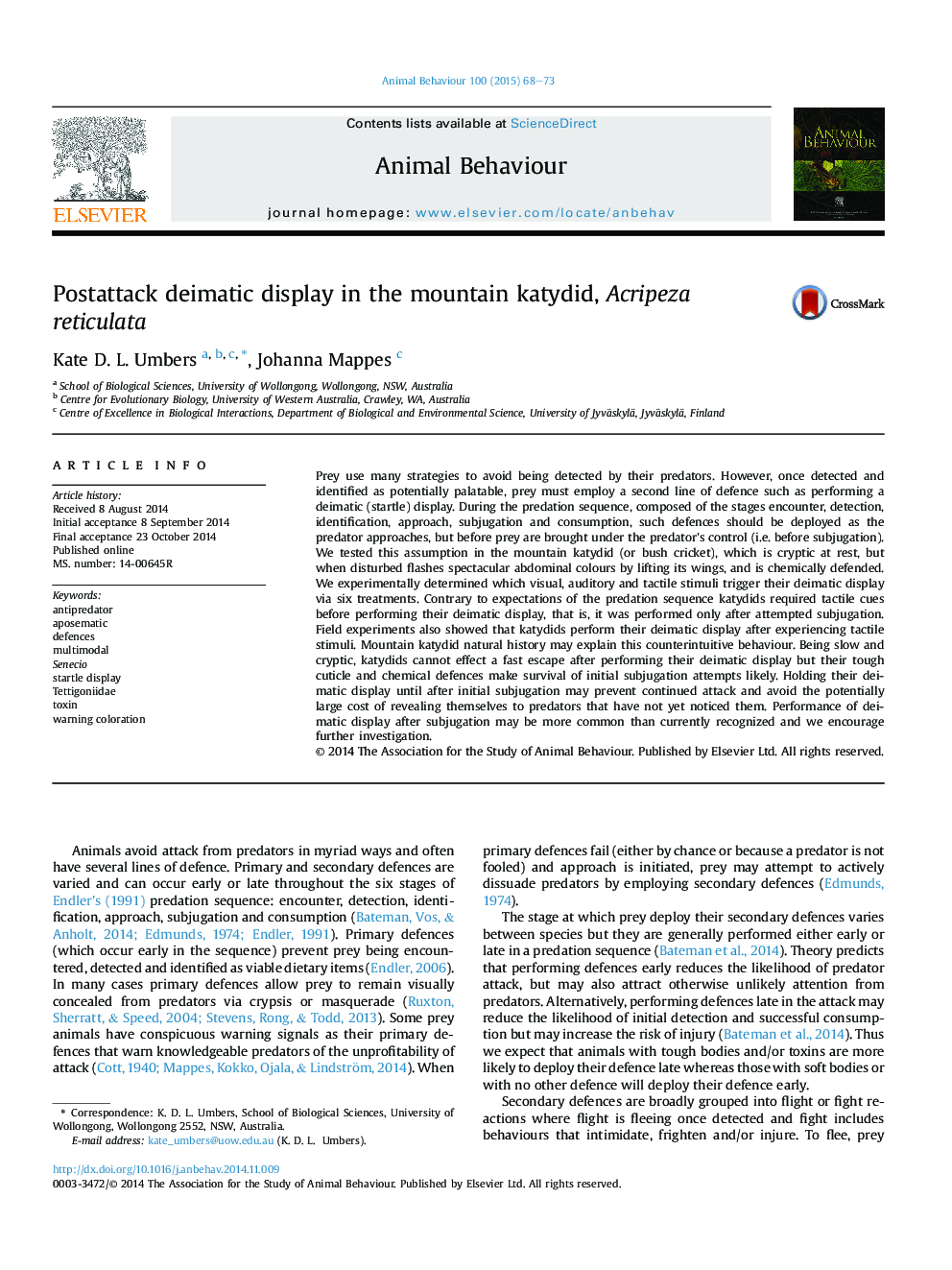| کد مقاله | کد نشریه | سال انتشار | مقاله انگلیسی | نسخه تمام متن |
|---|---|---|---|---|
| 8490198 | 1645492 | 2015 | 6 صفحه PDF | دانلود رایگان |
عنوان انگلیسی مقاله ISI
Postattack deimatic display in the mountain katydid, Acripeza reticulata
دانلود مقاله + سفارش ترجمه
دانلود مقاله ISI انگلیسی
رایگان برای ایرانیان
کلمات کلیدی
موضوعات مرتبط
علوم زیستی و بیوفناوری
علوم کشاورزی و بیولوژیک
علوم دامی و جانورشناسی
پیش نمایش صفحه اول مقاله

چکیده انگلیسی
Prey use many strategies to avoid being detected by their predators. However, once detected and identified as potentially palatable, prey must employ a second line of defence such as performing a deimatic (startle) display. During the predation sequence, composed of the stages encounter, detection, identification, approach, subjugation and consumption, such defences should be deployed as the predator approaches, but before prey are brought under the predator's control (i.e. before subjugation). We tested this assumption in the mountain katydid (or bush cricket), which is cryptic at rest, but when disturbed flashes spectacular abdominal colours by lifting its wings, and is chemically defended. We experimentally determined which visual, auditory and tactile stimuli trigger their deimatic display via six treatments. Contrary to expectations of the predation sequence katydids required tactile cues before performing their deimatic display, that is, it was performed only after attempted subjugation. Field experiments also showed that katydids perform their deimatic display after experiencing tactile stimuli. Mountain katydid natural history may explain this counterintuitive behaviour. Being slow and cryptic, katydids cannot effect a fast escape after performing their deimatic display but their tough cuticle and chemical defences make survival of initial subjugation attempts likely. Holding their deimatic display until after initial subjugation may prevent continued attack and avoid the potentially large cost of revealing themselves to predators that have not yet noticed them. Performance of deimatic display after subjugation may be more common than currently recognized and we encourage further investigation.
ناشر
Database: Elsevier - ScienceDirect (ساینس دایرکت)
Journal: Animal Behaviour - Volume 100, February 2015, Pages 68-73
Journal: Animal Behaviour - Volume 100, February 2015, Pages 68-73
نویسندگان
Kate D.L. Umbers, Johanna Mappes,